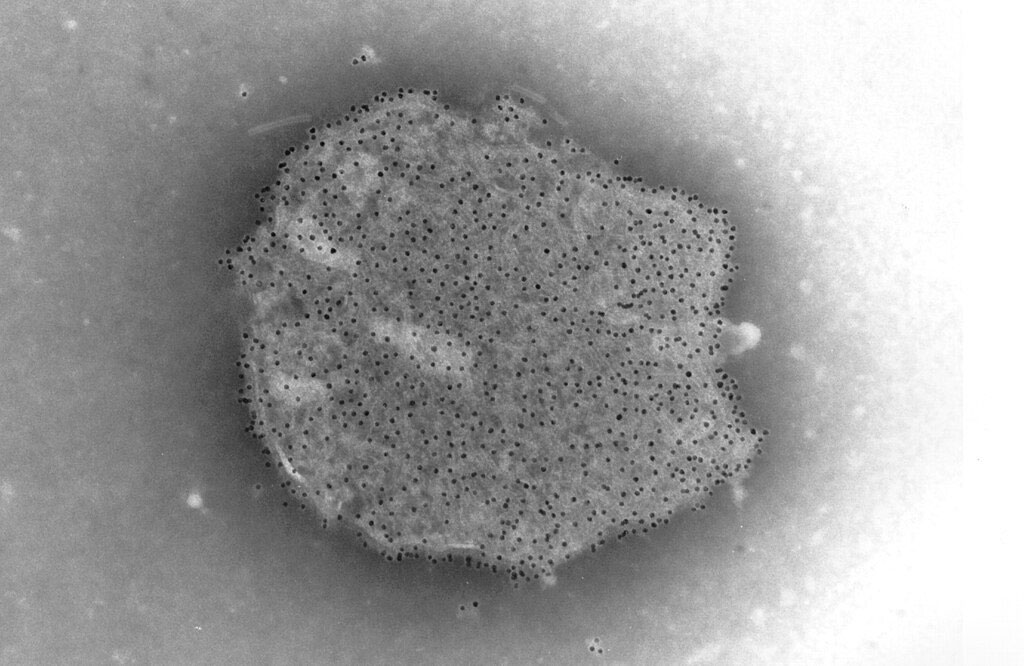A new peer-reviewed study published in Emerging Microbes & Infections by researchers from the University of Texas Medical Branch, the Australian Centre for Disease Preparedness (CSIRO), and the Uniformed Services University has revealed that different strains of Hendra virus (HeV) can cause markedly different disease outcomes in a gold-standard primate model. The work represents the first direct comparison of contemporary genotype 1 (HeV-g1) and genotype 2 (HeV-g2) isolates in African green monkeys (AGMs), a model used to evaluate vaccines and therapeutics under high-containment conditions.
Hendra Virus Background
Hendra virus is a highly pathogenic paramyxovirus carried by flying foxes (Pteropus spp.), capable of spilling over into horses and, rarely, humans. Since its discovery in Australia in 1994, HeV has caused at least seven human infections—four of them fatal—always via contact with infected horses. The virus has two known genotypes: HeV-g1, responsible for all recorded human cases, and the more recently discovered HeV-g2, first detected in 2013 in bats and later in horses. Until now, HeV-g2’s impact on humans was unknown.
Study Design
Researchers experimentally infected two groups of AGMs with high doses of either a 2008 HeV-g1 (Redlands) isolate or a 2015 HeV-g2 (Gympie) isolate, using combined intranasal and intratracheal routes to mimic natural exposure. The animals were monitored for 35 days, with comprehensive clinical, pathological, virological, and immunological assessments.
Key Findings
Survival outcomes diverged sharply
All five HeV-g1-infected AGMs developed severe, rapidly progressing disease and were euthanized by day 9. Four of five HeV-g2-infected AGMs survived to the study’s end, showing only mild or transient symptoms.
Differences in viral replication
HeV-g1 produced higher viral loads in blood and tissues, with infectious virus detectable in plasma and multiple organs. HeV-g2 viral RNA levels were lower, and no infectious virus was recovered from blood or tissues in surviving animals.
Pathology and immune response
HeV-g1 caused widespread organ damage—especially in lungs, brain, spleen, and kidneys—with abundant viral antigen detected by immunohistochemistry. HeV-g2 caused milder lesions, no detectable viral antigen in tissues of survivors, and a robust antibody response capable of neutralizing both genotypes and Nipah virus.
Early immune activation was similar, but disease trajectories diverged
Initial immune responses overlapped between genotypes, but HeV-g1 infections escalated into severe inflammation and coagulation disturbances, while HeV-g2 responses resolved over time.
Implications for Public Health and National Security
While HeV-g2 appears less pathogenic in this primate model, it has caused fatal disease in horses and retains the ability to infect a broad range of cell types. The possibility of viral evolution toward higher virulence, along with diagnostic challenges posed by genetic differences, underscores the need for vigilance. Hendra virus remains a zoonotic threat with high fatality potential, and differences in genotype behavior could influence outbreak management, veterinary protocols, and risk communication. For the general public, understanding and mitigating spillover risks—especially in horse-handling communities—remains essential to health security. Nationally, these findings are critical for guiding medical countermeasure stockpiling, laboratory preparedness, and One Health surveillance strategies.
This study provides the first head-to-head, high-containment evaluation of HeV-g1 and HeV-g2 in a model that closely replicates human disease. The results will inform vaccine and therapeutic development, potentially enabling targeted strategies depending on the genotype detected in an outbreak.
Pigeaud DD, Fenton KA, Turcinovic J, et al. Experimental challenge of African green monkeys with contemporary Hendra virus isolates produces divergent clinical disease. Emerging Microbes & Infections. 6 August 2025.


